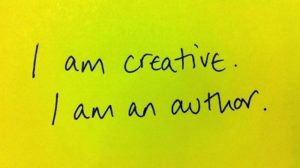 Creating an open source textbook is very much like authoring a traditional, commercial textbook.
Creating an open source textbook is very much like authoring a traditional, commercial textbook.
It is a significant undertaking. As such it’s useful to remember the joke about how to eat an elephant. The answer is one bite at a time. You don’t have to write (or plan to write) an entire book at the beginning. You can start by creating open source materials: An exercise, a chapter, a piece of a book, or even your course notes. Pilot test this in your class(es). Even if your goal is to eventually write a complete text, there is no need to reinvent the wheel or to write new material all at once. Be sensitive to the plethora of existing OER, from which you can draw according to the particular licensing of the source resource.
One benefit of creating OER/OA course materials is that you can tailor them to fit your students and the class(es) you teach. Another benefit that the materials will very likely be published sooner, since you won’t need to shop the project around to commercial publishers, and the production process can be quicker.
When you create an open textbook, there are three key decisions to be faced. The first is whether to work independently (or the degree to which one wants to work independently) or to work with a publisher. If you work with an OER publisher, your book is very likely to be peer-reviewed, as well as going through an editorial process much like with a traditional publisher. In addition, OER publishers usually pay their authors. Unlike traditional commercial publishers who pay royalties over time, OER publishers pay their authors up front.If you choose to work independently, consider whether there are university or statewide grants that could support the creation of your materials, such as a VIVA grant.
The second key decision is what platform to use to create and publish the work. If you work with an OER publisher, they will likely have a platform for you to use. If you choose to work independently, you could make the book available as a downloadable pdf. You could publish the work in html-format on a personal website.
A good place to start is the Rebus Community. Rebus Community is a community designed to provide complete support for the creation of OER/OA course materials. This includes an extensive framework for completing one’s project, guides and training of various types, and a platform for publishing the project.
One popular choice for a platform is Pressbooks (which is a website editor based on WordPress but designed to create texts). Pressbook offers a thoughtful framework for creating texts that can be published in a variety of formats including pdf, eBook, html, xml and more. Pressbooks is free to create a book, but there is a one-time fee for publishing your book once it’s completed. Once published, you can continue to make edits and changes without being charged.
BCCampus is another organization that provides support for creating OER. They offer a useful framework for completing the project, including publication using Pressbooks. BCCampus offers guides to adopting OER, adopting OER and self-publishing OER.
The third key decision is the degree to which one can obtain support for the project. Institutions are promoting the adoption and use of affordable course materials and increasingly, they are offering support to faculty and staff to create those materials. At UMW, it is possible to obtain funding, for example, through Faculty Research Grants, Summer Pedagogy Grants, and Small Teaching Grants from the Teaching Center. It is also possible to obtain time off to complete the work through sabbatical leaves, or Jepson or Waple Awards.
Image “From affirmation to reality. I am creative. I am an author” courtesy of Joanna Penn via flickr.com.
Recent Comments